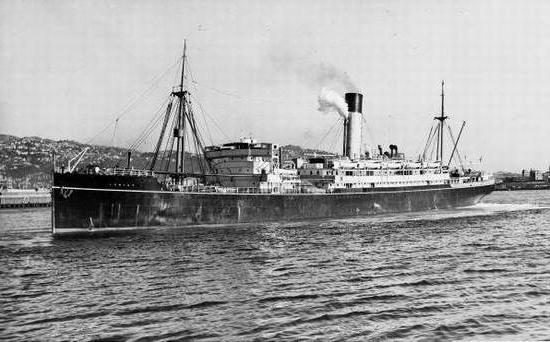In shipbuilding, each newly born ship gets its name. The name of the ships reflects the mores and tastes, history, political and state structure of a certain era of mankind.
Even one who has never been interested in the question of the origin of names is familiar with the legendary names from fairy tales, myths, ancient legends. The famous ship Sadko "Falcon", the ship of the pharaohs "Appearance in Memphis", the Vikings - "Big Bison" or the mythical ship "Argo".
If the great masters of the past endowed their first creations with the qualities of animals (for example, the eyes of a predator painted in the bow of the hull helped to better see the danger at sea), then the great sailors of the XV-XVII centuries chose the name of the ships in the spirit of the Middle Ages. They carried the names of holy or revered religious holidays. San Gabriel, San Rafael (Portugal), San Cristobal, Sancti Espiritus (Spain), Santa Maria de la Victoria, Sancti Espiritus. Or the famous "Victoria" from the flotilla of Fernando Magellan - the only surviving ship as a result of a tragic voyage to Spain.
The traditions that define the name of sea ships in Russia have their roots in the era of Peter I. The principles of naming began to take shape already: they should correspond to class, purpose, technological and combat qualities. The assignment of a nomination to a ship was in the competence of only the head of state. Emphasis was placed on historical and heroic names. The name of the sea vessel reflected the political structure of the state, its achievements and victories, ideology, and mores of the ruling circles. But besides this, the name should reflect the prestige of the state both in the eyes of other states and among its own inhabitants. Each representative of his native country should feel pride in his ship, for his country.

But in the beginning, during the formation of the Azov fleet, when special military achievements were not observed, the names were taken from the concepts of the Orthodox Church: "The Nativity of Christ", "Transfiguration of the Lord." The following names of sailing ships bore a fighting spirit: “Color of War”, “Fearlessness”, “Lion”, “Hercules”, “Fortress”, “Flag” and “Scorpio”. Bombardier ships of the times of Peter I bore no less sonorous names: “Thunder”, “Thunderbolt”, “Lightning”, “Bomb”.
During the creation of the Baltic Fleet, names appeared in honor of the royal dynasties: “Princess Anna”, “Princess Elizabeth”, “Natalya”. A feature in this period was the continuity of names. The name of the ships that served their service passed to the new ships.
With the change of types and classes of ships, names also began to change. They began to acquire symbolic names of birds and animals, natural phenomena, fairy-tale heroes: “Hurricane”, “Veshchun”, “Ilya Muromets”, “Mermaid”, “Tornado”.
When creating the Black Sea Fleet, they returned to the tradition of giving prestigious names: “Catherine II”, “The Twelve Apostles”, “George the Victorious”, “Rostislav”. The first destroyer was called the exact name "Explosion" (1877).
At the beginning of the 20th century, during the Russo-Japanese war, the dedication of sailors was also reflected in the names of warships. They returned the spirit of patriotism and faith in military historical traditions: Sevastopol, Petropavlovsk, Empress Catherine II.
Since the beginning of the October Revolution and in all subsequent Soviet years, significant changes have taken place in the order of naming ships and ships. All the usual names related to the Orthodox Church or the royal dynasty disappeared. All names were replaced by words or a set of words related to the revolution and the party: “Citizen”, “Democracy”, “Red October”, “Leninets”, “Stalinets”, “Soviet Ukraine”. The main problem of these names was the frequent change of political leaders. The names, trying to convey the spirit of patriotism, have lost their historical destiny.
In the postwar years, they began to return to the old traditions. Names appeared dedicated to the war heroes, famous commanders, and great cities: “Varangian,” “Resistant,” “Alexander Suvorov,” “Admiral Makarov,” “Moscow.”
It is very important, considering the name of the ships, be guided by common sense and historical feeling. This will save us from the faceless, meaningless and not coloring the navy names.
In our time, this issue is given considerable importance. Caronymy - a science that studies the name of ships and ships - pays special attention to the stages of development of the emergence of certain names, structure, traditions. It helps to avoid mistakes when compiling new names for new ships.